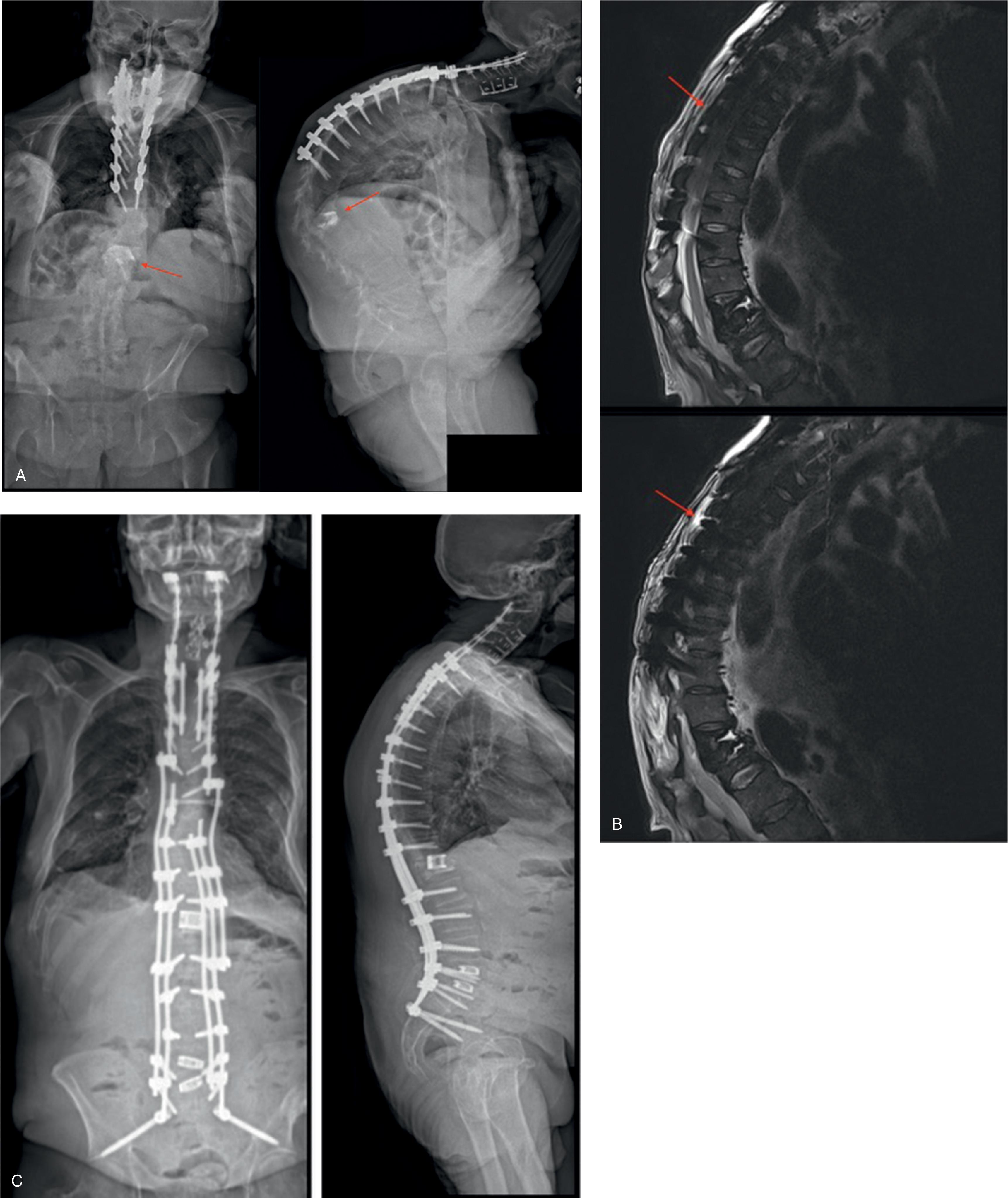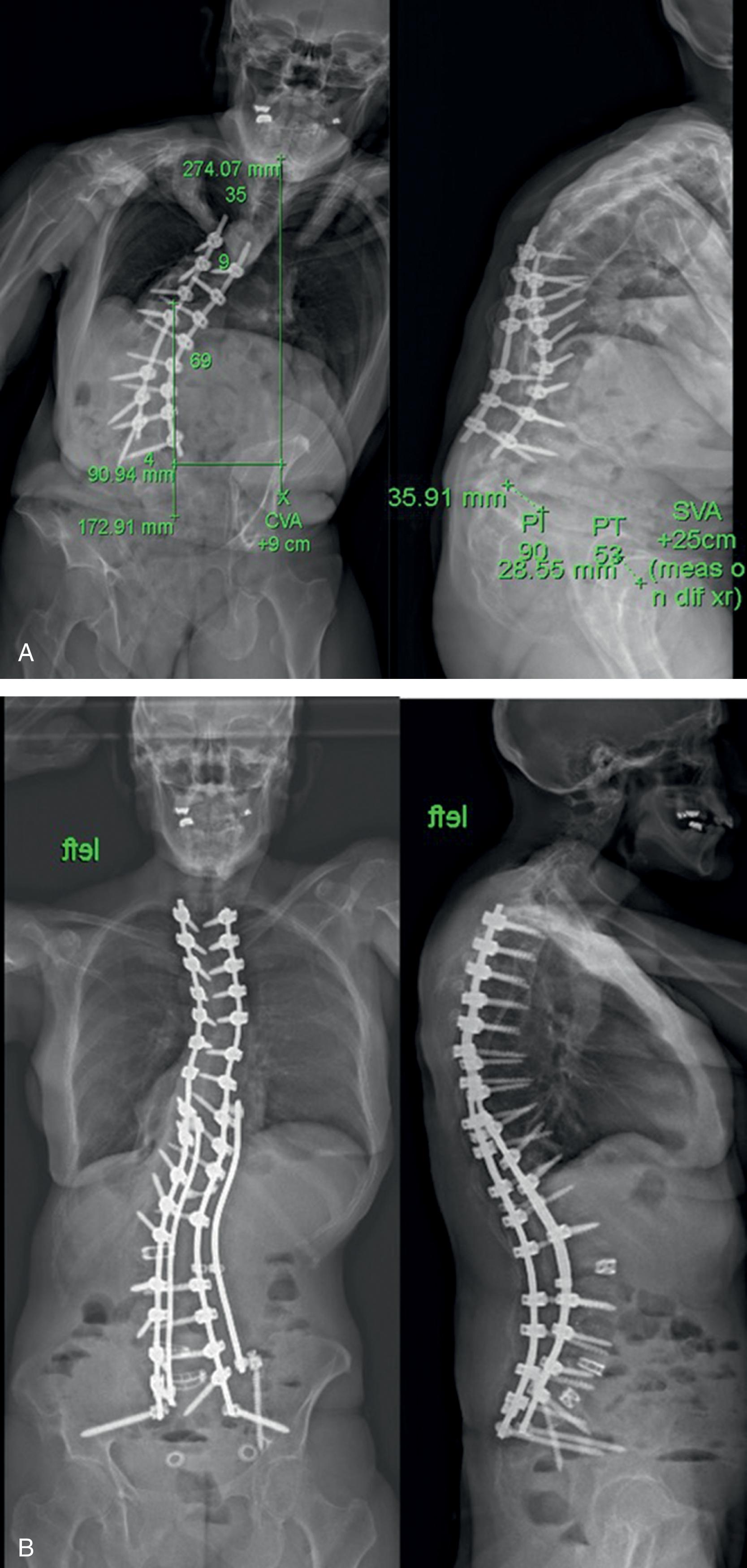Physical Address
304 North Cardinal St.
Dorchester Center, MA 02124
Vertebral column resection (VCR) is a challenging and lengthy procedure that is generally used as a last resort for the correction of severe rigid spinal deformities. Given VCR’s unique ability to translate the spinal column and provide truncal balance, the procedure is particularly well-suited for use in the thoracolumbar spine.
VCR was originally described by MacLennan in 1922, and then more recently by Bradford in the 1980s. Both surgeons performed the procedure using a circumferential anterior-posterior approach (APVCR), however, a posterior-only vertebral column resection (PVCR) was developed as an alternative approach by Suk et al. in the early 2000s. Currently, the PVCR has become the standard of care for correcting severe, rigid structural spinal deformities, among few other indications. Given that both methods are still used today, the merits, pitfalls, and technical aspects of both approaches will be discussed within the context of this chapter. Variation in operative techniques will be discussed where they exist, particularly for the posterior-only approach, and attention will be given to common complications and their means of avoidance. This chapter will also provide insight about proper preoperative evaluation, classification of spinal deformities, and the appropriate indications and relative contraindications that should be considered prior to scheduling a patient for a VCR.
Before planning any vertebral column intervention, the surgeon must first consider whether the patient is a viable surgical candidate based on comorbidities, nutritional status, and bone density. A detailed history and physical examination are necessary to ensure symptoms are appropriate for surgical correction. Any history of pain and/or neurological deficits should be carefully considered, and further explored with advanced imaging, vascular and neurological studies as necessary. In the case of revision surgery, radiographs and previous operative reports are useful resources in obtaining an understanding of the type of internal fixation used, levels of previous decompression and fusion, and the history of a previous dural violation. During a revision surgery, it may be necessary to review prior surgical records to understand difficulties experienced in the previous surgeries, the structures that were altered, and potential reasons for surgical failure if any exist. Following a proper physical and psychological assessment, one should carefully discuss patient goals regarding the planned surgical intervention and, taking into consideration the surgeon’s experience and comfort level, whether these goals are achievable. To properly determine whether the patient and surgeon goals can be met, the most important factor to consider is the deformity itself.
There are two frequently encountered deformities that may require the use of a VCR: a predominantly sagittal imbalance or a multiplanar deformity with coronal and sagittal imbalance. In addition, these deformities can be further classified as flexible or rigid. Deformities that do not correct with traction, suspension, or side-bending are considered rigid. Rigid deformities, especially those too severe to be corrected by segmental vertebral manipulation, generally require vertebral osteotomy(ies) or resection for correction, while alternative treatments should be considered for flexible deformities.
There are several different types of vertebral osteotomy, each carrying its own risks and benefits. The most commonly performed osteotomies for correction of sagittal imbalance are the Smith-Peterson osteotomy (SPO), the pedicle subtraction osteotomy (PSO), and VCR. The SPO provides the least amount of correction per addressed level, creating approximately 1 degree of lordosis per millimeter of bone resected for an average of 9.3 to 10.7 degrees of correction per vertebral level. A PSO can provide approximately 30 degrees of sagittal plane correction for a one-level procedure, although there is some variation depending on which vertebra is osteotomized. Although a PSO can provide greater correction than a SPO per level, the neurological risk to the patient is also greater. For example, the average blood loss during a one-level PSO is nearly double the average lost during a three-level SPO, despite both procedures providing a similar degree of deformity correction. Nonetheless, sometimes these increased risks are warranted to provide the patient with optimal deformity correction. A PSO is still advantageous for deformities with a component of coronal imbalance, as a three-level SPO is more likely to result in coronal decompensation than a one-level PSO.
Trading increased deformity correction for an increased risk is a reality that must be considered if a VCR is chosen. In addition to providing the potential for the greatest degree of sagittal deformity correction, VCR can also correct coronal imbalance and rotational deformity, and is unique in its ability to translate the spinal column. The average amount of coronal and sagittal deformity correction achievable following VCR depends heavily on the type of deformity, though different reports have claimed an average of 59% to 82% (23 61.9 degrees) of deformity correction in the coronal plane, and 72% to 87% (45.2 61 degrees) of deformity correction in the sagittal plane ( Figs. 19.1 and 19.2 ). This substantial amount of correction is not without significant neurological risk or technical difficulty, as different surgeons have reported average operative times ranging from 4.5 to 12.2 hours, and average estimated blood loss ranging from 2333 to 7034 mL. Furthermore, the overall rate of complications is estimated to be as high as 7.8% to 40%, with longer operative times and increased blood loss. Complications are related to the degree of kyphosis correction and length of fusion needed. Neurological complications, including a complete spinal cord injury, have been estimated to occur in 11.4% to 17.1% of cases. Thus, the decision to pursue a VCR should be considered carefully, and generally reserved for the most severe, rigid deformities. Specific case examples that may benefit from a VCR include severe angulated kyphosis, a rigid coronal spinal curve with decompensation with a Cobb angle greater than 80 to 100 degrees, a hemivertebra with a significant uncompensated spinal deformity, a primary isolated tumor, and a spondyloptosis of L5 on S1 resecting the L5 vertebral body. Its most typical indication, however, is the correction of a fixed coronal plane deformity, which is most commonly caused by idiopathic scoliosis.


If the goal of surgery is significant deformity correction that involves the need to translate the spinal column or provide significant correction in the coronal plane, then a VCR should be a consideration. However, given VCR’s level of difficulty and high risk of complications, less invasive procedures should always be considered first.
Although an assessment of the patient’s health, medical history, and psychosocial status are essential, the most important factor to consider before surgery is the patient’s spinal deformity and the safest surgical means of accomplishing the goals of surgery. A careful assessment of the spinal deformity is imperative, as not only does it allow one to determine if surgical correction is feasible and indicated, it provides insight into the degree of correction necessary.
Spinal deformities can be characterized by their degree of sagittal and/or coronal imbalance, and their correctability with physical maneuvers: ranging from completely rigid (or fixed) to very flexible. Fixed sagittal deformities were originally characterized by Booth et al., who classified these deformities as either segmental or global. Type 1 (segmental) deformities were characterized by focal areas of hyperkyphosis or hypolordosis and a C7 plumb line that remained centered over the L5–S1 disc. Segmental hyperextension could be identified in these patients on standing lateral radiographs, with a morphological appearance of the discs below the rigid deformity as being either trapezoidal or triangular in shape (anterior disc height 5 mm greater than posterior disc height). A trapezoidal disc morphology is characterized by an anterior disc height no greater than 2 mm greater than the posterior disc height. A type 2 (global) sagittal deformity is characterized by severe disc degeneration below the rigid spinal deformity or the presence of ankyloses down to the level of the sacrum, with a C7 plumb line falling more than 5 cm anterior to the lumbosacral disc. The primary difference between the two types of deformity is that in segmental sagittal deformities patients can remain balanced by hyperextending the spinal segments above and below the hyperkyphotic region, while patients with global deformities cannot.
Measuring the degree of spinal deformity allows one to calculate the amount of correction necessary to restore spinal balance and choose the least invasive osteotomy that will provide a balanced spinal correction. Studies have found that the most satisfying aspect of deformity correction is the restoration of sagittal balance. A surgeon should study the degree of flexibility of the sagittal deformity. More flexible deformities may be corrected by an anterior spinal reconstruction alone, while rigid deformities may necessitate posterior column shortening and spinal realignment.
The degree of coronal deformity is assessed by measuring the distance between the C7 plumb line and the center of the sacrum on an anteroposterior (AP) standing radiograph. A 72-inch AP radiograph can also provide information about the degree of apical translation by measuring the distance from the C7 plumb line to the apical thoracic vertebrae. Bridwell classified combined coronal and sagittal deformities with an associated sagittal imbalance with regards to the spatial relationship of the shoulders to the pelvis, and the degree of spinal flexibility. In type 1 deformities, there is a high shoulder and low ipsilateral pelvis because of a single curve. This may be corrected surgically with shortening of the spine on the side of the convexity with an asymmetric PSO. In type 2 deformities, the relationship between the pelvis and shoulder is not determined by a single coronal curve. These patients often have a multiplanar scoliotic curve and shortening on the side of a single convex curve would not provide adequate coronal balance. In these cases, a VCR may be indicated.
Become a Clinical Tree membership for Full access and enjoy Unlimited articles
If you are a member. Log in here